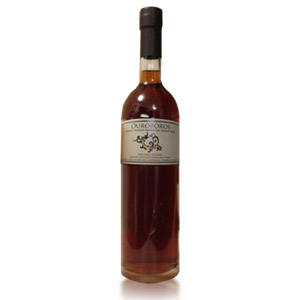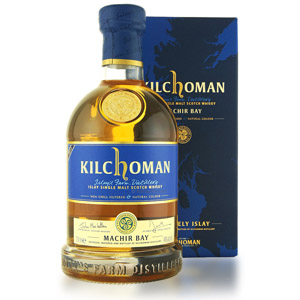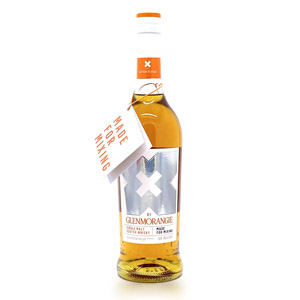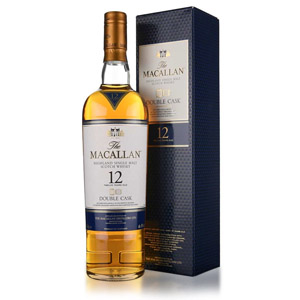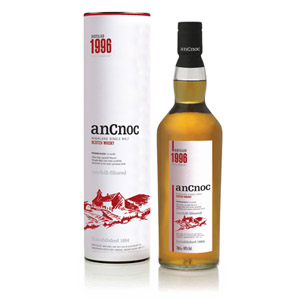For background on this distillery, see this post about my visit.
Ouroboros is one of three new expressions from “mad chemist” Bryan Davis, released recently along with Leviathan II and Bohemian Bonfire. The symbology is appropriate: the snake eating its own tail is an emblem of re-creation, of constant growth and renewal and the cyclical nature of the universe. Bryan’s whisky is constantly changing – not just via his experimental distillation and maturation techniques but by the liquid’s very nature as an endlessly complex alchemical stew of flavors and aromas. Every glass of Ouroboros brings a new experience for me, a new opportunity to be confused, amazed, disgusted, and rewarded in turn. My last glass was redolent of tobacco, my current glass speaks of forest fungi. My next glass? Unknowable.
Ouroboros is peated American single malt whiskey. It is double-distilled on Bryan’s insane wooden pot still from 100% California malted barley which had been heavily smoked in Bryan’s homemade smoker using California black peat sourced from a river delta near Mt. Diablo. This new-make was then aged in used oak barrels that Bryan re-charred and speed-seasoned (using air pressure!) with sherry. Bryan won’t tell you the age, but it’s less than four years old. Probably a lot less. For once, it doesn’t matter – this needs neither more time to mellow nor more time to pick up flavors from the cask. It’s bottled without added coloring or chill-filtration at a cask strength of 53% ABV.
Color: Bryan does not color his whiskies, and this one is downright mahogany in color.
Nose: Peat dominates, but not in the familiar Islay style of sea-inflected vegetation. This is mossy and mushroomy. The smell is similar to the decaying of a felled tree, covered in lichen and varieties of fungus. Yes, there is smoke, but it underlines rather than head-lines. Integral to the aroma is a dense, sticky, resiny sherry quality quite unlike the venerable sherried malts of Scotland. This sherry is more like a reduction – stewed plums and berry preserves caramelized to the point of burning – and integrates nicely with the oddball peat. Beneath the interplay of peat and sherry lies the heart of what Lost Spirits is all about: the malt distillate is unusual, even off-putting in its individuality. Like the scent of a “sour” (wild yeast) beer, there is a cacophony of bacterial and yeasty aromas. Among these are mid-ferment beer, ripe gym socks, souring raw milk, sauerkraut, and deeper, mysterious scents that I am unequal to the task of identifying. The whole is mind-boggling and challenging: not for the faint of heart nor the quick-to-judge. I have not smelled depth of this kind in a whisky or whiskey before.
Palate: At cask strength, this is expectedly potent, but I would not call it rough. The first impression is of reduced marsala: meaty and winey and savory. The funky malt and funkier peat are released from their cloak of sherry and confound the palate as they did the nose. Fascinating and puzzling.
Finish: Very long. This is the type of peat that sticks with you and shows up hours later while you’re brushing your teeth. A bit of fresh fruit – berries – linger for a short time, but the majority is peat and some silky tannins which are in no way bitter.
With Water: A few drops of water do a good job of separating the three distinct elements on the nose: the sherry diminishes, the peat becomes distinct, and the malt announces itself. It also adds a bit of nuttiness to the palate and amps the smoke in the early part of the finish. Do try with and without water. When diluted down to around 40%, the peat’s smokiness dominates the nose. All of the weirdness is on display at this proof, but it loses something of its togetherness.
Overall: This is not whiskey you sit on the back porch and relax with. This is thinking whiskey. This whiskey challenges, coerces, and redefines itself. It beckons you to examine it deeper and then smacks you in the face with a sweaty gym sock. This is the kind of whiskey that you finish a glass of, and then realize you have no idea what just happened. You want another glass, but you have to admit you’re a little scared of it. I thank the malt gods that I had experienced the funkiness of sour beer before sampling Bryan’s work. I honestly cannot say if I would have been as accepting without that preparatory experience. I can very easily understand why so many bottles of Seascape and Leviathan I were returned to K&L after their debut – anyone buying a bottle without tasting it first runs the serious risk of hating it right away. That drives my rating decision: Try it before you buy it, or buy it with an open mind and an adventurous spirit.
It should be noted that my tasting experience is skewed by the fantastic one-on-one explanation Bryan gave me about his philosophy, his methods, and his dual love for peat and distilling experimentation. This is definitely a whiskey that benefits from context, and I fear that a lot of potential fans may be turned off without this kind of context. It’s probably also impossible to find outside of California, and be warned that California laws prohibit Bryan from selling spirits on-premises unless you have an out-of-state driver’s license. Tours are available via appointment: lostspirits.net.



